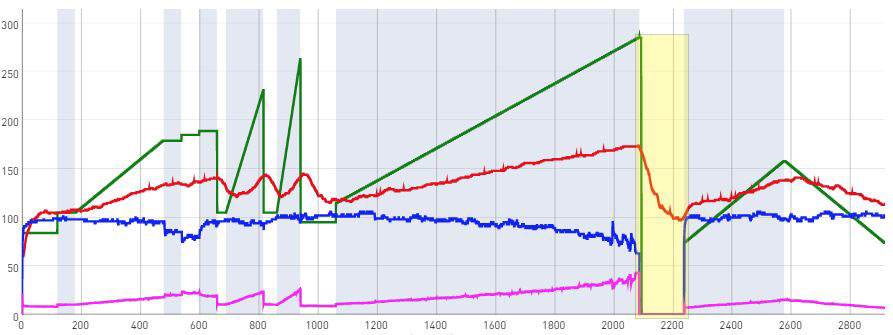How efficient is your cardiovascular system? The recovery index tells you!
A few weeks ago we introduced a small change within the MagneticDays AUTOTESTS. But first, let’s remind us all what AUTOTESTS are: autotests or self-tests are incremental test protocols available (free of charge) to all MD customers/users who own an account on our site. They are used to choose the best range of physiological parameters when it comes to writing a workout or riding a Self-Managed Workouts, or simply to know the fitness level after a period of inactivity.
Each MagneticDays AUTOTEST (seven in total) corresponds to an assumed threshold level (processed by an algorithm) and, for each one, both the warm-up and the start of the incremental test will change. What does the change consist of? Until recently, the athlete’s recovery was an active recovery, meaning that after reaching the maximum bearable wattage, the brake opened to give the possibility to recover by pedaling. From today, however, the recovery is passive (yellow area of the graph below), meaning that the athlete recovers “from a standstill” for the entire duration, which is decided by the MD Coach. We defined this as the recovery index, or the ability of the heart to reduce the heart rate at the end of an exercise. The speed with which the heart returns to a low frequency indicates the efficiency of the cardiovascular system. It is believed that the recovery index reflects the reactivation balance of the parasympathetic nervous system and the inhibition of the sympathetic nervous system[1].

Cells need to rebuild ATP during recovery
It is necessary for cells to rebuild ATP (Adenosine triphosphate) after exertion, and this process takes place during recovery. In the first 10 seconds this is done by the anaerobic alactacid system (the re-synthesis of ATP by means of the creatine phosphate kinase enzyme). Subsequently – up to about 30 seconds – the anaerobic lactacid system is activated (splitting of glucose with production of ATP and lactic acid). From 30 seconds on, the aerobic system is more involved in the recovery.
The three recovery indexes (IDR), described in the report that the MagneticDays Coach sends to the athlete after each training block, indicate the efficiency of the energy systems at the end of a maximum effort, such as an incremental power test. In addition, they indicate the athlete’s resilience in the three areas as well as in general. This allows the MD Coach to calibrate each customized indoor training session, with the relative recoveries studied ad hoc.
The recovery indexes in the MagneticDays report
The recovery indexes highlighted in the MagneticDays report are:
- IRD AA: Anaerobic Alactic Recovery Index, or the ability to resynthesize ATP through the use of the enzyme creatine phosphate kinase (CPK);
- IDR AL: Anaerobic Lactacid Recovery Index, or the ability to resynthesize ATP through the use of anaerobic glycolysis;
- IDR AE: Aerobic Recovery Index, or the ability to resynthesize ATP through the use of the Krebs Cycle;
- IDR GENERAL: GENERAL Recovery Index, or the ability to resynthesize ATP through the use of all three systems.
How to read the recovery index
To read the recovery index, the following must be kept in mind: the number indicated in the report corresponds to the slope of the linear regression line intercepted through the points examined by the MD Coach. A low number corresponds to a poor recovery capacity, conversely, a high number means the athlete has a good recovery capacity. The numbers taken individually are not very useful. To understand whether the personalized indoor training has achieved its effects, it is necessary to compare them with the parameters of a subsequent incremental test. And this is one of the many advantages of the MagneticDays coaching service.










